The Love Kingdom: Paradise on Earth
“For nothing seems clearer from ancient records than that the whole ancient world knew of nothing more ancient than the black man’s civilization.” – Anonymous
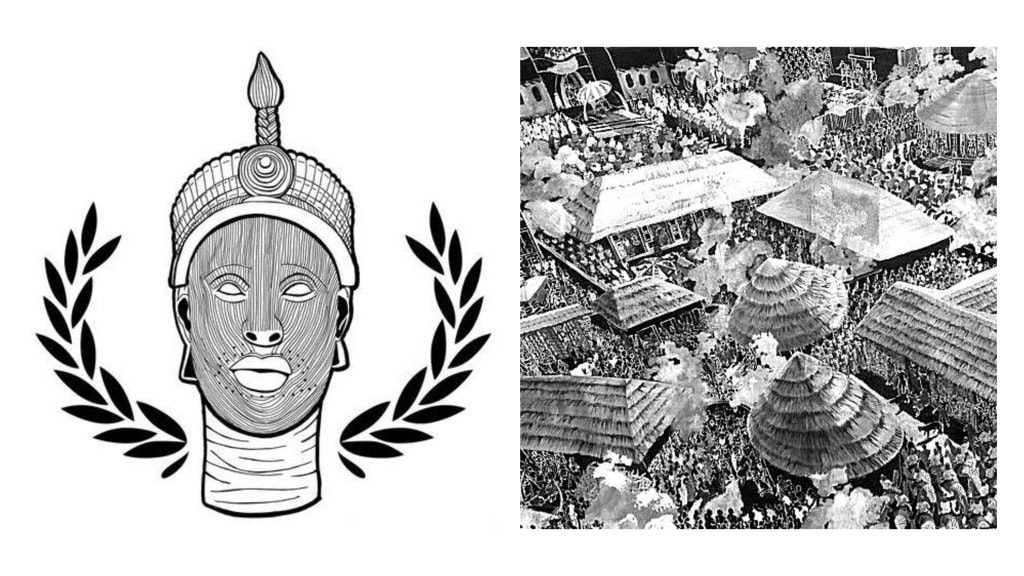
The civilizations in ancient West Africa before the arrival of the Transatlantic slave trade can be described as “Heaven on Earth,” “The Envy of the World,” and “Paradise on Earth.” The continent of Africa or Alkebu-lan as it was known during the ancient world was the “land of the Spirit People” and the “land of the God’s.” One of the most prosperous kingdoms located in the aqua tropical and lush rain forests of present-day Southwest Nigeria was the Love Kingdom, founded by the supernatural, intellectual, creative, spiritual, and compassionate Yoruba (ethnic group or tribe) people. From a bird’s eye view, the Love Kingdom was like Southwest Nigeria, Tanzania’s island of Zanzibar in East Africa, and South Asia’s island nation of Sri Lanka combined.
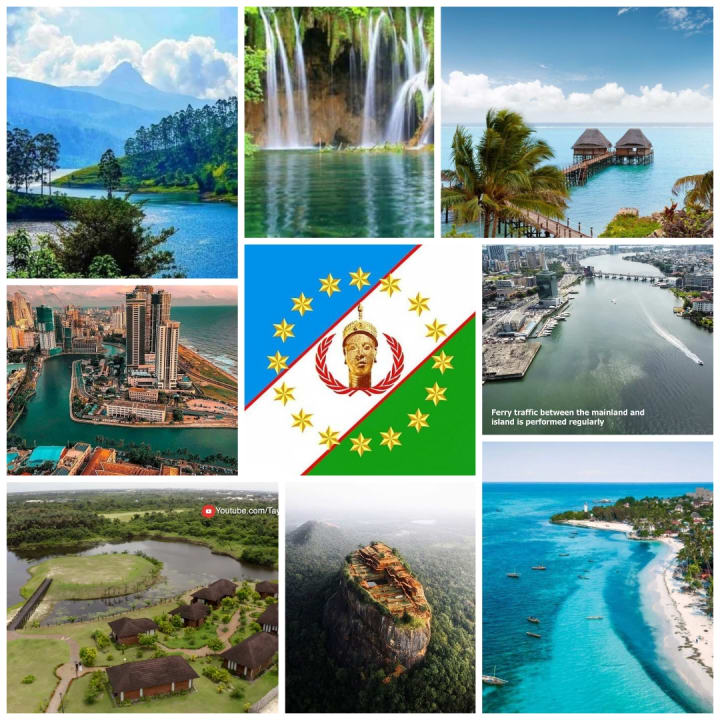
The beautiful scenery of the Love Kingdom included rivers, mountains, hills, lakes, streams, and lagoons leading out into the Atlantic Ocean. The soil was also rich, and since the Love people were master agriculturists, there was always plenty to eat in the kingdom, because many different foods were plentiful like yams, bananas, oranges, sweet potatoes, beans, plums, avocados, apples, mangoes, and more. Many people of the kingdom also had their own flourishing farms of cotton, palm oil, shea butter, and ground nuts. The exotic animals that were in abundance in the kingdom were the lion, buffalo, leopard, wolf, foxes, jackals, monkeys, deer, and porcupines. The hippopotamus dwelled in the large rivers, while the alligators lived in the swamps and lagoons. Probably the most exciting animal of the Love Kingdom was the talking green parrot. The Love people also domesticated cats, dogs, cattle, buffaloes, and may have domesticated pigs, camels, horses, donkeys, and elephants.
Some noticeable and attractive landmarks in the Love Kingdom included the majestic Erin-Ijesha Waterfall, beautiful archipelago of islands located in the Atlantic Ocean just three miles from the rich and enticing city of Eko, present-day Lagos (coastal city of the Love Kingdom), and the Sigiriya Rock, which is an ancient fortress located in the Isoya village, just six miles north of the magnificent Love Palace. Sigiriya Rock is approximately 590 feet high, and easily formed the highest peak in the Love Kingdom.
Within this vast area, the Love Kingdom had over 63 communities, ranging in size from massive cities, middle-sized towns, and villages with one, two, and three-story homes made of polish stone, which were located all over the kingdom, and each home had bathrooms with drains that carried the waste to the sewers under the main streets. The Love Kingdom also had many tributary cities, towns, and villages under its rule that covered a sizable territory. The Love (subgroup of the Yoruba) people are the first Yoruba people, who are ancient, originally spiritual, advanced creatively, intellectually, and artistically, and they are expert agriculturalists.
The Love people were “the fathers and mothers of all tribes.” – Anonymous
Although the Love people were not warlike people, they saw themselves as brave, courageous, and warlike. The Love people have high moral standards, and they are, of course, very loving, kind, social, polite, hospitable, happy, very musical, kind to strangers and generous even without getting anything in return.
It was foretold that the Love Kingdom was so close to heaven that from the streets of Love, one could reach, touch, and communicate with their ancestors who have already transitioned to live in their new angelic homes in heaven. The Love Kingdom was “the source of the spreading,” and “the place where all nations of the earth sprang from.” As the first humans on earth, “The Love people… were the fathers and mothers of all and all people came from Love.” It was believed that in the kingdom of Love, there was a secret hidden shrine that leads to the gates of heaven. Amongst all people of West Africa, it was known that the Love Kingdom must not be violated, because an assault to the Love Kingdom was to upset the supernatural guarantees that sustained the world. The Love people were also a priest or sage people because “the world would spoil, as the Love people were the priests of the deities who ruled the world.” Even the ancestors of the European, Asian, Native American, etc. can be shown a spot in the Love Kingdom where their ancestors migrated out and populated the rest of the world.
“All religion originated from the kingdom of Love, and all other religions evolved later in distant parts of the world.” – Anonymous
The great human suffering that was brought forth from successful conquests and suppression of multiple West African kingdoms and empires in ancient West Africa caused the Love kings and queens to reevaluate their government infrastructure. Firstly, the Love Kingdom became the first Buddhist civilization in Africa. Buddhism is a spiritual belief system that originated from India. It focuses on understanding and overcoming suffering through teachings like the “Four Noble Truths” and the “Eightfold Path,” which outline the framework for comprehending suffering’s nature, its causes, and the journey to liberation.
Buddhist monks from south and southeast Asia had traveled to Africa, because they wanted to find out for themselves all about this mystical continent that was referred to as the “land of the Spirit People,” and the “land of the God’s.” The Buddhist monks knew Africans were highly spiritual people, and they wanted to add to their already established African spiritual systems by teaching African people all about living a Buddhist way of life, which are the Four Noble Truths, and the Eightfold Path, and these are the heart of Buddhist teachings. The Four Noble truths are Dukkha (life is full of suffering), Samudaya (desire and illusions leads to suffering), Nirodha (by stopping cravings, the mind will be free from suffering), and Marga (end all cravings to end suffering). The Eightfold Path is a comprehensive guide to ethical and mental development and outlines the means to overcome suffering. This path is divided into three categories:
- Wisdom (Right Understanding and Right Intention)
- Ethical Conduct (Right Speech, Right Action, and Right Livelihood)
- Mental Discipline (Right Mondfulness, and Right Concentration)
“Walk the path of right understanding, intention, speech, action, livelihood, effort, mindfulness, and concentration.” – Anonymous Buddhist Monk on the Eightfold Path
The Buddhist monks taught the Africans if one understands the Four Noble Truths, then one has a clear understanding of the way things really are. It is through the mastery of these truths where one can reach supreme liberation, that is believed to be possible for all human beings. Siddhartha Gautama “The Buddha” of the ancient Indus Valley Civilization (present-day Pakistan and Western India) described Nirvana as the perfect peace of mind that is free from ignorance, greed, and hatred. In fact, when the Buddha became enlightened, he did not pretend to be a god to the people, because he was just a man, a “Holy Man” who had found the meaning of life. He traveled throughout India to teach others about his spiritual teachings, and some of his followers spread to different nations throughout Asia like Sri Lanka, Cambodia, Tibet, China, Japan, and many more countries.
The Love Kingdom and its kings and queens were inspired by the teachings of the Buddhist monks who traveled from Sri Lanka when they visited the prosperous Love Kingdom. In the ancient Love Kingdom, the right to protection and treatment as a guest in the kingdom was a highly humane law that was respected and upheld by the Love kings and queens and the Love people. Verily, every citizen of the Love Kingdom was a lawyer because everybody knew the customary laws.
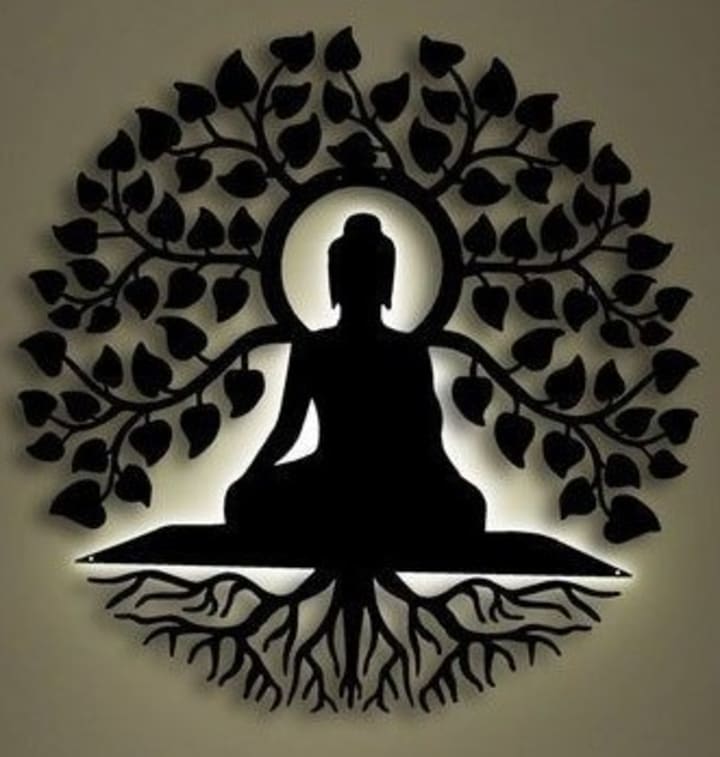
Although all citizens of the Love Kingdom were free to practice any form of spirituality they desired without any repercussions or consequences, the Love kings, queens, chiefs, and nobles decided to incorporate Buddhism mixed with principles of their African spirituality. Yoruba Spirituality comprises of Olodumare (God) and the Orishas, “helper” gods; demi-gods and demi-goddesses, like Oduduwa, God and supernatural priest and warrior king; Yemoja, Goddess of all humans, waters, plants, and animal life; Orunmila, God of wisdom and knowledge (Ifa); Oya, warrior Goddess of divine winds, hurricanes, transformation, etc.
“Yoruba spirituality is the science of allowing God to flow through you, so that each breath becomes a prayer, and as God breathes, you breathe.” – Anonymous Love Master Diviner
The ruling Love kings and queens, and the elite renounced violence and they believed a spiritual system combining Buddhism and Yoruba Spirituality was powerful enough to create a firm and solid foundation for peace, harmony, and prosperity in the Love Kingdom. When the Love royal family decided to incorporate Buddhism into the kingdom’s spiritual way of living along with their already established Yoruba Spirituality, the kingdom began to slowly change for the better. For instance, from the Buddhist monks’ teachings, all the people of the Love Kingdom understood Buddhism does not rely on deities or gods, like Olodumare and the Orishas from their Yoruba Spiritualty. Instead, Buddhism highlights personal effort and self-awareness. Meditation is the cornerstone of the Buddhist practice, and aids in developing mindfulness and concentration, enabling people who practice Buddhism to gain insight into the nature of reality.
The conversion to the mixture of Buddhism and Yoruba Spirituality was marked by a shift in attitude because the Love kings and queens witnessed the deadly repercussions of neighboring West African kingdoms and empires, whose rulers were sometimes vengeful, and at times hell bent on conquering their neighbors. The Love kings and queens were peaceful rulers who looked after the wellbeing of their people and their entire kingdom. Through the Love Kingdom’s new vision for life, a series of social reforms were instituted which were exceedingly humane and radical for the time.
For example, assisting the Love Kingdom administration was a sizeable bureaucracy financed by taxation, tribute, and presents. The royal family and their officers used most of the currency, but a portion of it went to the social welfare (i.e., social security) of the kingdom. The Love kings and queens showed great charity to the blind, maimed, and depressed (i.e., the physically and intellectually disabled) and these people were known as the “king’s and queen’s poor.” Land and revenues were always awarded to them, and when they wished to pass through different cities, middle-sized towns, and villages of the Love Kingdom, food and drinks were presented to them at the cost of the public if they remained within the kingdom. When the “king’s and queen’s poor” decided to leave a city, middle-sized town, or village for another destination within the borders of the Love Kingdom, they were provided with what was necessary for their journey, and a guide and a group of Love security guards were assigned to carry their belongings. The “king’s and queen’s poor” were treated humanely in every city, middle-sized town, or village in the Love Kingdom, under the penalty that those who fail to follow the strict rules were punished by the Love kings, queens, and chiefs.
“There is no better work than promoting the welfare of the whole world. Whatever may be my great deeds, I have done them to discharge my debt to all beings.” – Anonymous Buddhist Love Queen
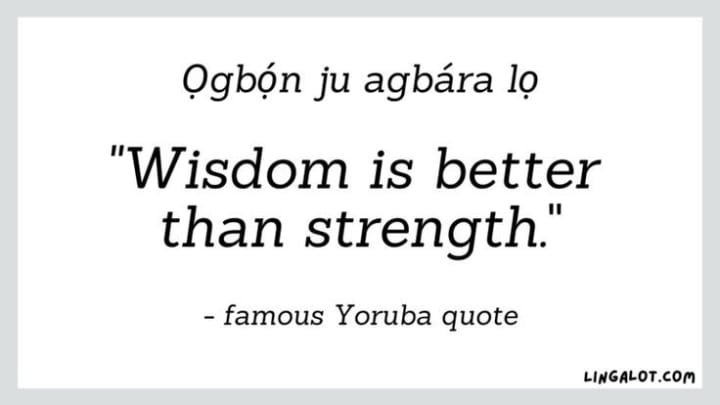
Life in Love during Ancient Times
“For some 600,000 years, Africa and Africans led the world.” – Anonymous
The origin of the Love Kingdom began around 3300 BCE, and the Love Kingdom became one of the most powerful kingdoms in West Africa. The Love Kingdom was rich and prosperous, and the inhabitants of the kingdom were highly cultured people. The Love Kingdom reached “massive kingdom” status with a population of about 11.3 million people or more, with over 8,000 villages. If people during the modern era of the 21st century were to go back in time, they will notice that the Love Kingdom was very advanced and sophisticated during its reign of power. For instance, the Love Kingdom was one of the most fabled kingdoms of the whole ancient world, because industrially, the Love Kingdom was equivalent to present-day Paris, France; Tokyo, Japan; Chicago, and New York City of the United States of America all in one. The landscape of the Love Kingdom was in the aqua tropical and lush rain forests, along with the elegant and breathtaking gold and white sand beaches that was identical to the shores of present-day Southwest Nigeria, Zanzibar, and Sri Lanka combined.
The climate of the Love Kingdom also attracted many people because the kingdom only has two rainy seasons, but for the most part, the people of the Love Kingdom enjoy a warm climate all year round.
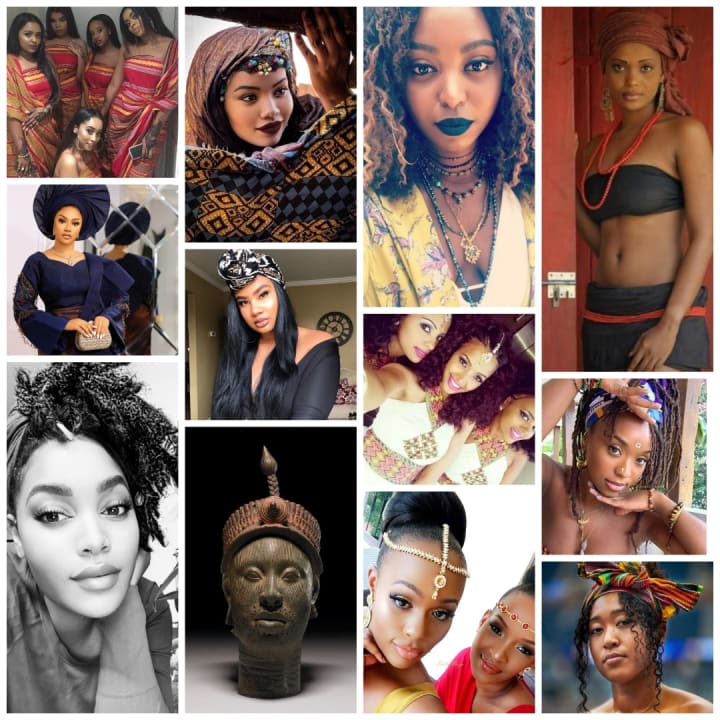
The Love Kingdom was always very busy, because each settlement within the kingdom created different arts and crafts. This generated daily traffic of people, and each settlement had its own marketplace, and this was the area where the Love women were supreme because they were constantly on the move from one settlement to another. Agriculture created a strong base for trade for the people of Love, both local and long-distance trade. The trade from the Love Kingdom went across the Niger River to the West African savannah grasslands, and beyond through the Sahara and north to the Mediterranean world. The Love kings and queens paid special attention to long distance trade to make sure the traffic was peaceful and orderly to and from the Love Kingdom.
The Love Kingdom also had a strong iron industry and became a major center of iron production for much of West Africa. Probably the most famous of all industries in the Love Kingdom was the bead industry because beads were incorporated within the king’s and queen’s crowns, clothes, bracelets, wristlets, and anklets, which became a great treasure of personal adornment for the Love kings and queens. The Love kings and queens were industrious people, and they gained enormous wealth from exporting kola nuts to the north to the Western Sudanic kingdoms and empires, and they brought back horses to the Love Kingdom. Horses in the Love Kingdom were used by the chiefs and royal messengers.
“The Blacks of the Love Kingdom are always thinking in terms of perpetual motion; the Love kings and queens are also thinking in terms of the hidden mysteries of the world; and you don’t know what the Love people, by virtue of their condition and circumstance, may give to the world as a surprise.” - Anonymous Buddhist Monk from Sri Lanka
The Love Kingdom was home to one of the best and most respected colleges of the whole ancient world, the University of Love. The University of Love attracted thousands of young people from all parts of Africa to study law, surgery, and many more subjects from highly educated Black men and women. The University of Love housed the largest library in Africa because there were between 250,000 and 700,000 manuscripts, while the library of Alexandria of ancient Egypt had between 40,000 and 400,000 manuscripts. The study structure of the university consisted of faculties of law, medicine, and surgery, letters, grammar, geography, and art.
Many Black people from all over the African continent were employed as scientists, doctors, lawyers, and other scholars at the University of Love. From here, even scholars from foreign lands such as Europe, Asia, and the Americas came to study at the University of Love, and this was how religious ideas and architectural designs were spread abroad to different lands outside of Africa. The University of Love during its height concentrated on curing diseases that plagued humankind, and doctors developed immunizations against typhoid fever, smallpox, and other bacteria diseases. The Love doctors were also transplanting limbs, and the physicians were knowledgeable in such things as blood circulation and measles.
The medical schools of Love taught surgery for the removal of cataracts from the eyes, and the skies above were scanned for greater knowledge in astronomy by the professors and doctors of the University of Love.
There has never been a perfect society in the history of the world, but the Love Kingdom founded by the ancient Yoruba “Love” people created an almost perfect society. In the Love Kingdom, knowing that there was no figure to blame for their bad choices and decisions, everyone was careful of their actions. When a crime was committed, a person was punished here and now. For some, human beings are essentially sinners confined by their animal spirit and can only be saved by the intervention of a savior outside of themselves. The Love Kingdom did not tolerate evil deeds in the hope that one day, the one perpetuating evil will get punished when he or she dies. Also, one would hardly ever contemplate stealing, causing mayhem, exploiting people, committing adultery, bearing false witness, not to talk of committing murder in a true indigenous African civilization like the Love Kingdom. In the kingdom of Love, every person had the right to a free trial, and there must be no punishment greater than the offense, or fines beyond one’s ability to pay. Also, all fines for offenses against an individual went to the victim, not the court, and part of the money received from the loser was returned as an expression of goodwill and desire for renewal of friendship.
It was a taboo and a shame to the entire family and community, even if one member is seen lacking the very basic things of life like food and a roof over the head because in the Love Kingdom, it was every citizen’s right to have a home and earn a livelihood for oneself and family. Slavery (indentured servitude) existed in the Love Kingdom, and the bondsmen the Love people called “slaves” were not slaves in the modern sense, like in Western (European) Civilization. For instance, enslaved people in the Love Kingdom were laborers imprisoned for various offenses. Also, enslaved people in the Love Kingdom eventually became members of the community, were integrated into families, became members of any of the arts and crafts, had rights to farmland, held offices, and had rights and privileges enjoyed by the Love Kingdom. Although the ancient Love Kingdom Civilization did indulge in slavery (indentured servitude), but their version of slavery was very humane, and a thousand times more moderate than slavery in the United States of America. In the U.S., enslaved people were forced to work against their will as chattel slaves for hundreds of years without a pay day. Many generations of people spent whole lifetimes as chattel slaves in the U.S., because many people were born and died as enslaved persons.
The Love kings and queens understood the land of the Love Kingdom didn’t belong to anyone, because it was ultimately “God’s gift to mankind.” It was the ruler’s duty to distribute the land evenly amongst all the people because each family has a right to land, free of charge. Each person of the Love Kingdom had the right to an opportunity, and means to make a living, which is the right to live. In the Love Kingdom, everybody’s child was everybody’s child.
“It takes an entire village to raise a child.” – Anonymous Love Citizen
In the Love Kingdom, there was also no need for halfway houses, and youth detention centers, and this included adults and children. There was also no delinquency among children. According to ancient Yoruba traditions, every adult male and female in the Love Kingdom were considered father and mother of every child. For example, the Love Kingdom created the world’s strongest traditions of family and cohesion. The Love children had morals and manners, and they became some of the best behaved in the world. In the Love government infrastructure, there were also many family counseling agencies throughout the kingdom, which helped to reduce divorces to a bare minimum. Social life was well organized, because the old, the sick, and the infirm were cared for. Unmarried women were rare, and prostitution was unknown.
To the Love kings and queens, the number of people they ruled over was what mattered most because the more people the Love kings and queens ruled, the greater the king or queen was. Buddhist kings and queens, whether in Asia or Africa used their people as an audience, objects of their compassion, and as the element of their redemption. Some great examples of altruistic and compassionate Buddhist kings from Asia are rulers like Emperor Asoka “the Great” of the Mauyra Empire (present-day Northern and Southern India, and parts of Iran, South Asia), and King Jayavarman VII of the Khmer Empire (parts of present-day Cambodia, Thailand, Malaysia, Vietnam, Myanmar, and Laos, Southeast Asia). Buddhist kings and queens felt the pain of the people they ruled over as spiritual pain because this pain was a sign as being at a higher level, meaning the Buddhist kings and queens felt more than their own people did. To the Buddhist kings and queens, physical suffering is less important because it is physical. It was through the Buddhist kings and queens performing good deeds that they could redeem their soul from misdeeds of past lives.
The Love kings and queens oversaw the construction of “hospital temples” when the Love Kingdom incorporated Buddhist teachings with Yoruba Spiritualty. These hospital temples were ahead of their time during the ancient world because they offered spiritual prayers and medical herbs for the sick and infirm. The average citizen in the Love Kingdom could have aliments to be cared for, free of charge, and drugs and food were also always available. The Love Kingdom’s 302 hospitals were open to all people for 24 hours a day. This was a period in the world where medical insurance, racism, especially medical racism didn’t exist.
New and clean roadways, dams, and reservoirs were dedicated to the healing and general well-being of the large population of Love. The 302 hospitals had a division of labor and included hospital managers, drug grinders, drug distributors, and staff to boil water. The altruistic and compassionate Love kings and queens not only secured the borders of the Love Kingdom, because they also improved the living conditions within the kingdom’s borders.
For eight square miles from both sides of the Niger River in the Love Kingdom, there laid wide and clean avenues lined with multiple palaces, monuments, and mansions. The kingdom’s main boulevards were 35 feet wide. The famous shops and restaurants were lined up in order, with the most important buildings being the Granary, the Citadel, and the Great Bath. On both sides of the Niger River in the Love Kingdom, the people vied with each other in a race for magnificence. For example, besides the mortuary temples of the Love kings and queens, there were also various religious cults of the Yoruba Orishas like Oduduwa, Yemoja, Orunmila, Ogun, Sango, Oya, Obatala, Oshun, etc. and later, religious cults of the Buddha.
The belief in life after death was the great inspiration for building on such a grand scale, and the Love people attempted to erect structures that would stand forever, leaving something of remembrance and importance behind for the descendants of the Love people. There were also beautiful, elegant, and sturdy homes where many prominent people lived, like priests or sages, nobles, herbalists, diviners and healers, craftsmen, artisans, farmers, entertainers, bands, singers, storytellers, musical groups, doctors, physicians, traders, blacksmiths, chiefs, generals, warriors, and the masses.
The Grand Palace of Love
It was foretold that pre-ancient Atlantis was located where the ancient Love Kingdom was located. There were legends that there was a district in present-day Nigeria between the Niger River and the Atlantic Ocean. This district founded a royal kingdom and its palace had walls of gold which long ago had sunk beneath the waves.
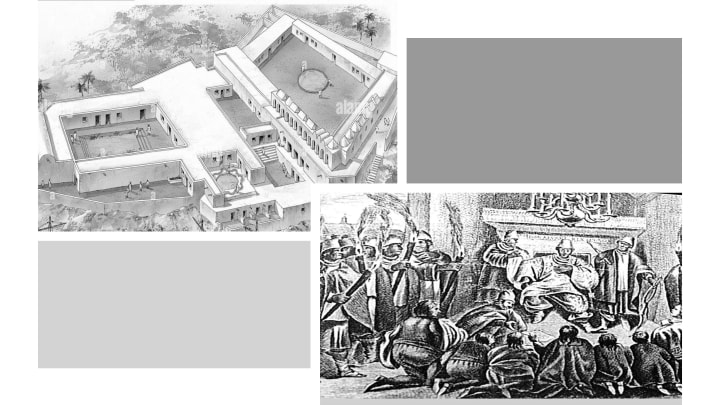
The palace of Love during ancient times could only be described as a dreamlike castle brought down from heaven to earth. The Love kings and queens had great taste and were not strangers to luxury, because the Love Palace had 15,000 doors, a central hall supported by columns of marble and rock crystal decorated with stones, and the roof was covered with silver and gold. Inside the palace were over 200 lighted silver chandeliers, containing over 1,000 silver lamps burning perfumed oil. The palace was also surrounded by beautiful gardens, and the streets leading to and from the palace were so paved. The Love Palace was ventilated with perfumed air and had 300 ornate baths, with hot and cold running water. Some of the fountains were made of quicksilver that sprouted skyward in the gardens among beautiful and bright colored flowers, luxuriant shrubs, and happy, chirping, and singing songbirds. The grand palace of Love employed nearly 30,000 people. The estimated cost of the great Love Palace compared to modern-day standards is $300 million.
Over the centuries, the palace of Love grew bigger and bigger, and grand new additions ended up replacing older structures. The main gate and front of the grand palace became more imposing as the Love kings and queens added tall structures and high gables. The Love Palace also had a spacious audience hall, courtyards on the octagonal bathing pool with tiered seating or steps, domed ceilings, storerooms covering half of the palace and a decorative pool.
Askia Mohammed Touré I (Askia the Great), arguably one of the greatest emperors of the Songhai Empire, was in the Western Sudan (West Africa). He donated two golden thrones to the Love Kingdom for the Love kings and queens. The capital of the Songhai Empire was the golden kingdom of Gao (present-day Southeast Mali), and the whole Songhai Empire was known as the “gold country,” because the soil of the Songhai Empire produced much of West Africa’s gold. The Songhai Empire was massive in size because it almost touched both coasts of the Atlantic and Indian Oceans. In fact, presenting gold in the form of thrones to neighboring kingdoms and empires was always a pleasure for Askia the Great. The rulers of Love and Songhai respected each other, although they ruled their countries with an iron fist differently. For instance, the Songhai Empire became one of the largest countries in Africa by military conquest victories. Expanding through conquest was against the morals of the Love kings and queens, and this was why the Love government agreed to expand the territory of their country by their positive and powerful influence, instead of violence and war.
Many of the Love Kingdom’s shrines were located on and around palace grounds, which ensured that the palace was both the political and spiritual center of the Love Kingdom. The king’s and queen’s palace of Love became the center of society, and festivals became magnets that attracted large cheering crowds of people. There were also several examples of ancient graffiti on seven worship temples near the Love Palace. A Buddhist Love Queen chose seven temples to be constructed to honor Yoruba Orisha Yemoja, who represents and governs the earth’s seven oceans: The Arctic, North Atlantic, South Atlantic, North Pacific, Indian, and Southern Oceans.
The temples were for people who wanted to pay homage through meditating and worshiping the Yoruba Orishas and the Buddha. Under the Love king’s and queen’s supervision, the Love craftsmen constructed worship temples, and all the graffiti art was by the talented Love artists, which displayed all the Orishas and the Buddha in all their spiritual glory and splendor. Foreign visitors and traders entered the Love Kingdom through the port cities of Eko and Badagry, and when the foreign visitors and traders traveled inland and made it to the palace grounds, they were astonished, and words couldn’t explain and describe how beautifully constructed the Love Palace and worship temples were, and the creative art style that was displayed all over the temples simply blew them away. Seasonal and annual rituals and festivals, along with occasional royal audiences, brought masses of people to the palace courtyards to view and praise their king and queen. A special code of conduct was also enforced for people’s appropriate behavior in or near the palace, and those who disregarded the rules were punished.
The building of city walls in the Love Kingdom did not experience any external dangers, and the Love people did not feel a need for a significant military establishment. Small royal establishments held the toll posts at the main trade routes to provide security and collect the king’s and queen’s toll tax. Beyond this, no military establishment was created or needed by the Love people, because the Love Kingdom was one of the safest kingdoms of the whole ancient world. Although the Love Kingdom was free from centuries of external threats, the kings and queens continued to build walls. The kingdom’s walls became part of the cultural definition of the Love Kingdom. The Love kings and queens were very aware of their responsibility, and they owed it to their people to protect, and enclose them all with walls.
The Love kings and queens were obeyed with as much docility on the further limits of their kingdom as they were in their own palace, and there reigned everywhere great plenty and absolute peace.
“The Love Kingdom, where the king and queen resides, is larger than any city I’ve ever seen. All the streets are clean and run straight as far as the eyes can see. The houses are large, especially the king’s and queen’s royal palace which is richly decorated with silver and gold, and has fine columns. The kingdom is wealthy and industrious. It is also so well governed that theft is unknown, and the Love people live in such security that they have no door to their houses.” – Anonymous Buddhist Monk from Sri Lanka
From the founding of the Love Kingdom, the Love people looked upon all strangers who visited their kingdom in the light of pilgrims (i.e., Sri Lankan Buddhist monks from South Asia who visited the Love Kingdom), because the Love people believe civilization began in their homeland of present-day Southwest Nigeria. The Yoruba people hold the title as one of the oldest peoples in the tropical rain forests of West Africa.
The kings, queens, and chiefs of Love knew they had to live up to what it meant to be a true “African” leader, which was invoking the aid of a deity (i.e., Orishas) to secure benefits for the people and leading them to peace and prosperity. The kings, queens, and chiefs of the Love Kingdom were servant leaders, which means they seek to inspire change through personal examples of sacrifice. The servant leader achieves goals of change by transforming how people perceive themselves, awakening the sense that by their own energies and actions they have the capacity to achieve meaningful results.
The Love kings, queens, and chiefs were anointed as “The Lieutenants of God on Earth.”
Never Forget the Great Kingdom of Love
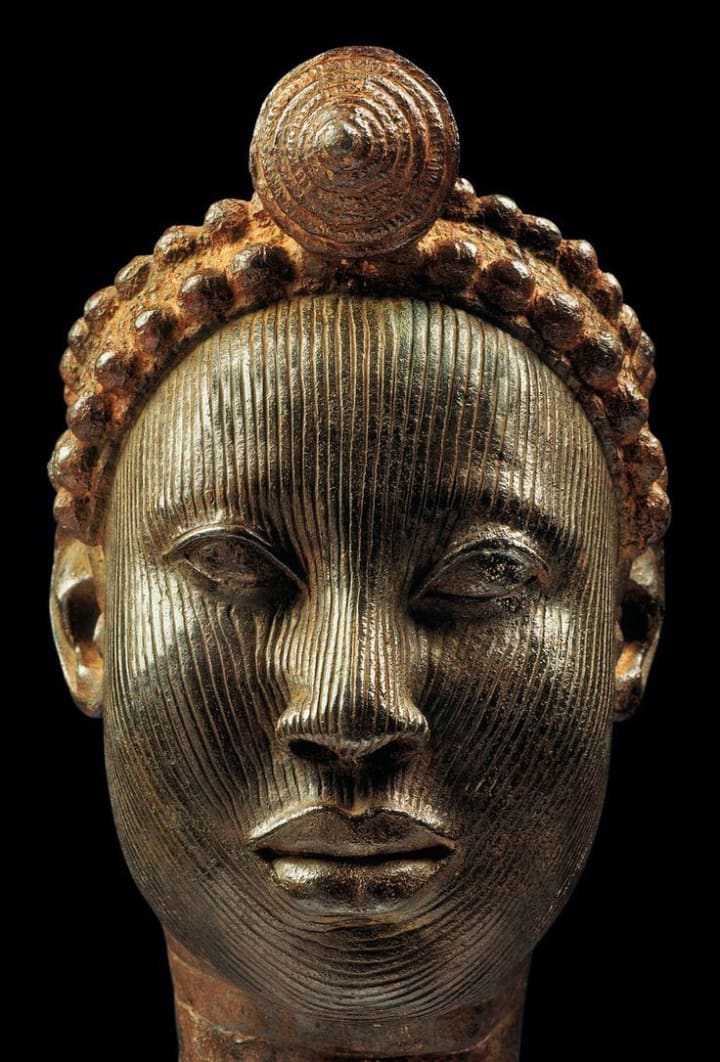
The famous Love brass and terracotta sculptures are some of the best naturalistic arts in tropical Africa. The art of Love was so advanced that it was compared to the ancient cultures and civilizations of Egypt, the Indus Valley Civilization, and classical Greece and Rome.
The streets of the Love Kingdom were wide, and commerce, religion, and respect for human rights were always priority in the Love Kingdom. The Love Kingdom eventually became the “Love Empire” that comprised of the whole of present-day Southwest Nigeria, and the Love kings and queens were the leaders of much of West Africa, not by means of war, but by the influence of the kingdom’s commerce and the Love people’s expansion of its heritage.
“Cultivate compassion and kindness, for they are the seeds of a harmonious world.” – Anonymous Buddhist Love King
About the Creator
Darryl C. Richie
Inspirational Speaker, Author and Blogger looking to inspire with my story of being a two-time cancer survivor and hip amputee, and connect the African Diaspora to their African roots via Black Consciousness.






Comments (1)
I love your work and i just subscribed to you page. please subscribe to mine too. Let's grow